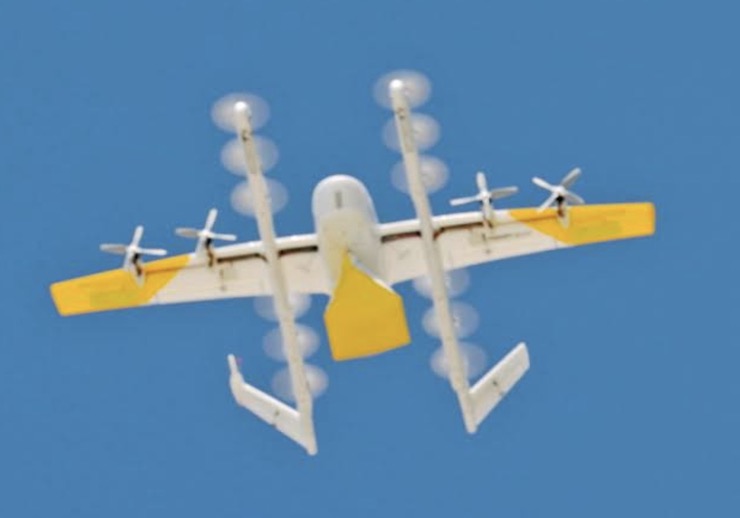
© Wing.com
Pressure is growing on the Federal Aviation Administration (FAA) to loosen its strict regulations governing autonomous drone flights over populated areas. In testimony before Congress last week, Adam Woodworth, CEO of the Alphabet drone subsidiary Wing, urged legislators to compel the FAA to approve more such flights on a routine basis. Woodward noted that the FAA currently approves Beyond Visual Line of Sight (BVLOS) flights only sparingly, leaving many companies unable to scale up their operations to meet rising consumer demand. As a result, progress in a range of drone applications, including farm management, infrastructure inspection, emergency response and remote package delivery, is being slowed unnecessarily, he noted.
Woodworth presented 9 separate points for legislators to consider as they began deliberations over this year’s FAA Reauthorization Bill. The annual review gives Congress an opportunity to influence the activities and goals of the agency that oversees the regulatory framework for all US US aircraft, both manned and unmanned. Currently, the FAA still draws on decades-old regulations geared to conventional commercial carriers to establish flight rules for UAVs, a bone of contention with drone operators who feel that the drone rules are unduly restrictive and tend to marginalize the burgeoning drone industry from becoming globally competitive and fulfilling its commercial potential.
In an op-ed column previewing his congressional testimony published in Aviation Week, Wodworth wrote:
“The FAA is the right regulator for uncrewed aircraft systems, but the agency currently regulates Wing’s 11 lb. foam drones using the same framework that was designed for 400,000 lb. airliners. Many of those regulations make sense for passenger-carrying airplanes, but not for small aircraft with no people onboard.”
Woodworth said the FAA needed to reorganize itself internally to create a top-level assistant director position devoted exclusively to the operations of UAVs The new assistant director would replace the FAA’s ad hoc grating of waivers and exemptions for BVLOS flights with a more “pragmatic and predictable” approval system that allowed drone companies that had passed safety tests to conduct such flights largely at will. The new assistant director would also work with the rest of the FAA to formally integrate manned and unmanned aircraft into a single comprehensive national air traffic management system.
Woodworth’s testimony is only the latest sign of a major new push by the drone industry to compel stronger action by the federal government to support America’s global drone leadership. Last year, several legislators requested the GAO, Congress’ watchdog agency, to investigate why the FAA had failed to complete its promised review of drone regulation by the deadline previously established by the Obama administration in 2014. And last month, two senior US senators, John Thune (R-SD) and John Warner (D-VA), introduced bipartisan legislation calling for a comprehensive overhaul of the FAA’s drone regulatory framework, citing many of the same arguments and proposals advanced by Woodward in his testimony last week.
Market research data suggests that the United States – at 36% – is still the world’s leader when it comes to current and projected revenues from drones. But other countries, including China, Japan and India, are recording higher growth rates, in part due to looser regulations on autonomous drone flying, hence the growing U.S. concern about burdensome FAA regulations.
|